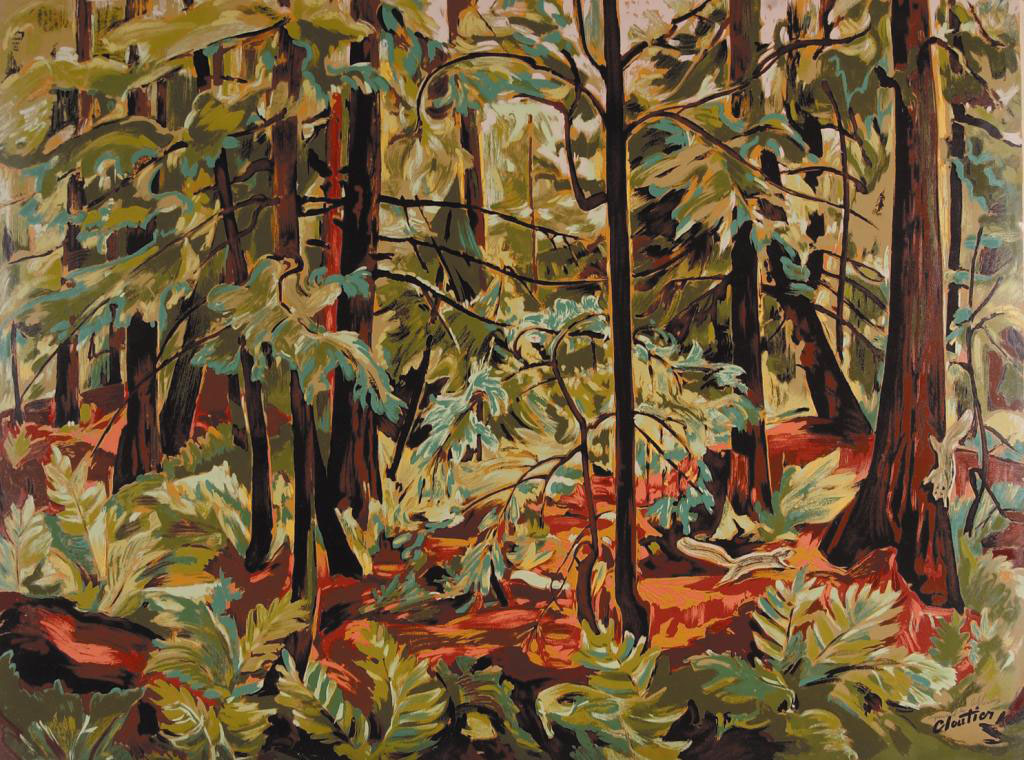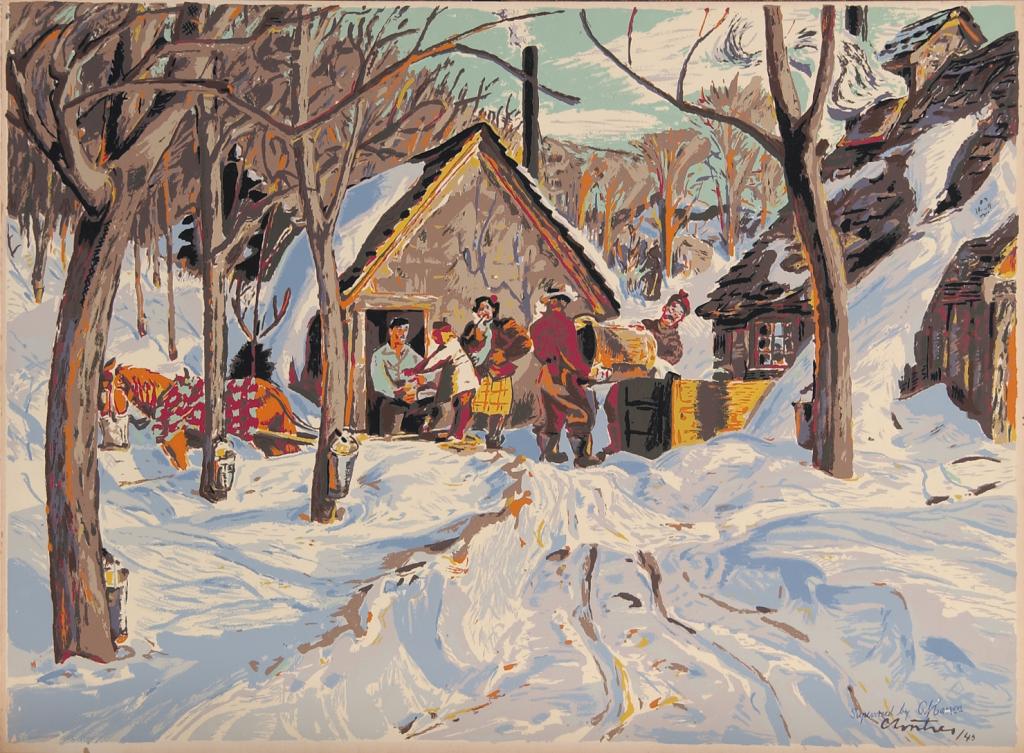Born in Massachusetts of Canadian parents, Canadian artist Albert Edward Cloutier moved to Canada in 1903. He received encouragement in the arts from his parents and started painting at the Monument National at the age of 11.
Mostly self taught, he took frequent painting trips with A. Y. Jackson and Edwin Holgate of the Group of Seven. For a number of years he worked as a commercial artist, but later turned to the field of fine arts exclusively. He was influenced in his early work by reproductions of the French Impressionists, the Group of Seven and the pictorial of work by Cézanne. His later style was more abstracted, based on an intensified realism. Essentially a painter and graphic artist, he has worked in oils, watercolours, tempera, clay, wood, metals, and mosaics.
Dorothy Pfeiffer once wrote, “His draftsmanship is colorful and certain in interpretation and design. Cloutier carefully plans what he intends to express, then unhesitatingly sets it down.” Cloutier completed a frieze that was 450 square feet for the Canadian Pavilion at the New York World’s Fair in 1939; a mural for the Astra Car of the Canadian Pacific Railway passenger train; 12 panels in the Salle Bonaventure at the Queen Elizabeth Hotel in Montreal, as well as a mural for Le Carignan restaurant in the same city at Place Ville Marie.
He designed and illustrated a book entitled ‘Pathway to Greatness’, describing the development of the St. Lawrence River to the St. Lawrence Seaway, published in 1959 by the Canadian Pulp and Paper Association.
The print entitled ‘Eastern Hemlock’ was commissioned specifically for the Trees of Canada series by Sampson-Matthews in 1950, and was paid for by the Canadian Pulp and Paper Association. The image was to represent the trees in the untouched Northern Canadian landscape. The viewer is placed in the middle of a hemlock forest, looking through the calm from ferns to sky. Its size is important, as the large scale creates a sense of awe at nature’s calming power. Being painted in greens, reds, and browns, this work makes the viewer pause and feel refreshed, as if witnessing a healthy Canadian ecosystem.
The silkscreen entitled ‘Sugar Time, Quebec’ exemplifies Cloutier at his peak of form and feel. This work invites the viewer to join the narrative of one of the important yearly rituals of rural life. While embodying the height of silkscreen technically, it employs a real feeling of warmth and community. The piece is brought together by Cloutier’s strong style without becoming overly complex.
During his career as an artist, Cloutier worked for the Government of Canada as Art Director in the Wartime Information Board, at Rapid Grip and Batten Limited, and later as an official War Artist with the Royal Canadian Air Force from 1943 to 1946. He lectured at the École des Beaux-Arts in Montreal for over two years. He was a member of the Canadian Society of Painters in Water Colour; the Canadian Society of Graphic Art; the Royal Canadian Academy; the Art Directors’ Club of Montreal and the National Society of Art Directors, as well as other notable institutions. He is represented in a number of colections including the National Gallery of Canada, The Arts Club in Montreal and many major private collections.

